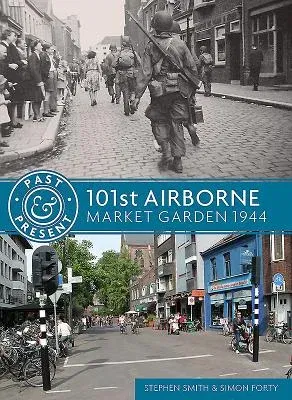The Past & Present Series reconstructs historical battles by using
photography, juxtaposing modern views with those of the past. It shows
how much infastructure has remained and points to the passing nature of
things such as outfits, uniforms, and ephemera.
After its operations in the Cotentin and around Carentan, the 101st was
withdrawn from the lines in late June and sailed back to England on LSTs
in July. After several false alerts, they invaded by air again into the
Netherlands on September 17, 1944, part of the airborne element of
Operation "Market Garden." The mission was to hold open Hell's Highway
so that land forces could advance safely to Arnhem.
Operation "Market Garden" is a strongly debated subject among WW2
historians: was it a brave attempt to end the war early that foundered
for being a bridge too far, or was it, rather, an ill-conceived waste of
resources that should have been used on another Front? With hindsight,
there's no doubt that the operation was a daring--if not risky--attempt
to attack deep into enemy territory proposed by a general often
disparaged for being too conservative.
But at the beginning of September, it seemed to the Allied commanders
that the enemy was disorganized; it had lost many men, huge numbers of
vehicles, and had retreated helter-skelter through France and Belgium.
In reality, the Germans had already started brilliant fire brigade
reorganization and would soon have an effective defense throughout the
Netherlands.
101st parachuted right into the middle of enemy territory and north of
Eindhoven. They met little resistance to begin with and captured most of
their initial objectives by the end of 17 September. But the Germans
managed to demolish the division's primary objective, a bridge over the
Wilhelmina Canal at Son, forcing the 101st to attempted to capture a
similar bridge a few kilometers away at Best. They found the approach
blocked but continued to hold territory enabling engineers to rebuild
the demolished bridge. Other divisional units continued moving to the
south and eventually reached the northern end of Eindhoven. In the
following days they successfully defended the town of Veghel but failed
to take the City of Helmond. As Operation "Market Garden" progressed,
the rest of the 101st Airborne Division joined the 82nd Airborne
Division on the island to the north of Nijmegen. The Screaming Eagles
saw seventy-two days of fierce round-the-clock fighting against crack
German troops and showed their fighting ability and tenacity.

